Ranked and rated: The best (and worst) European countries for good weather
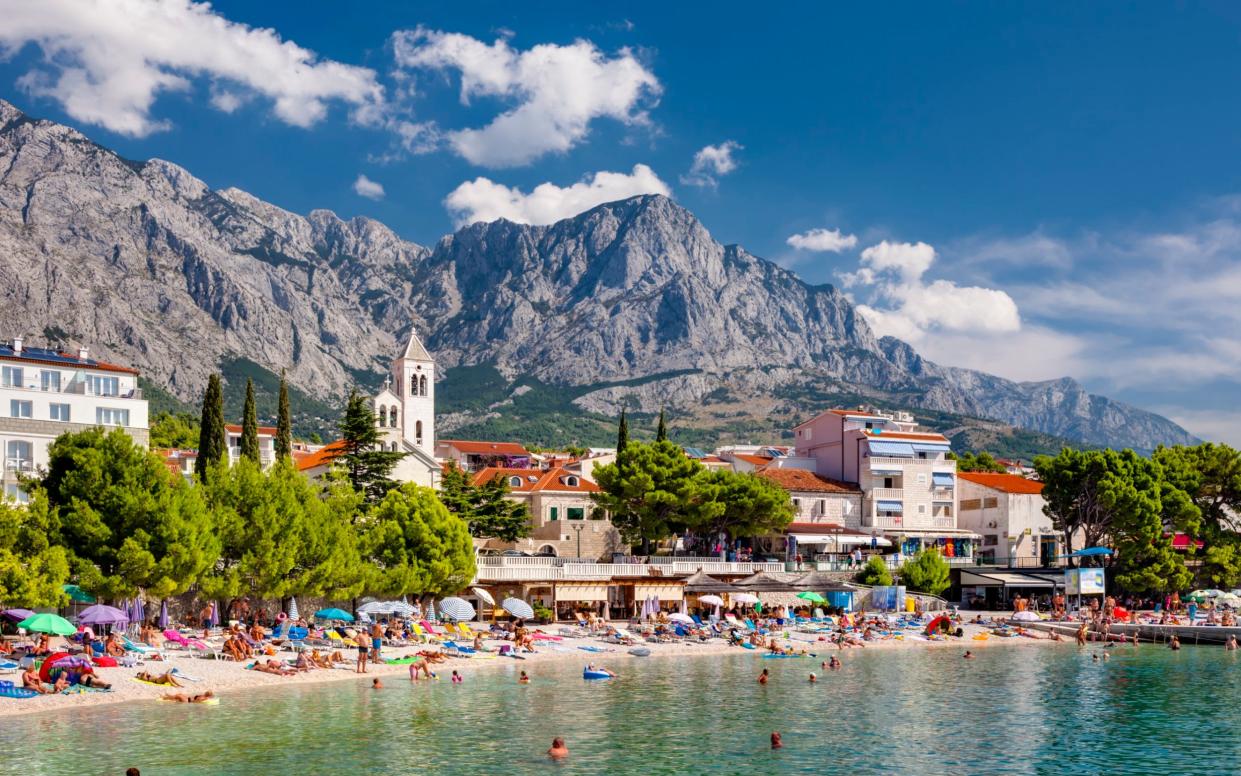
Food can make a holiday. Bad weather can break one. Try Venice in the rain. Or Córdoba in August. Or any British seaside resort when it’s windy, really windy.
Price and value-for-money matter to all travellers. When millennials are asked what they want from a holiday, many cite “Instagrammability”. But when the Telegraph surveyed readers, more than half rated weather as the most important factor, with cost and hotels coming a distant second and third.
Reliable sunshine has been arguably the single most important promise made to British tourists since the Sixties, when Franco opened up the Costas to northern Europeans. Swimmable seas, tan-inducing beaches and the right kind of temperature for sangria and siestas made for an alluring package for families fed up of dashing from the front at Rhyl or Ryde to find shelter in an amusement arcade.
The science of weather is tricky. Averages blur nuances. Does quantity of rain matter as much as frequency of showers? Cold winters are great for skiers, so long as it snows. Gusty mornings and wavy seas might appeal to surfers and sailors. Then there’s the complex reality of climate change. All Europe’s weather is increasingly unpredictable, and extremes are becoming the norm. In our survey, we award higher points for those countries where we can, to some extent, still bet on sunshine or dryness or winter snow when we come to booking a trip.
With all these caveats, using aggregated data from numerous sources, including the World Meteorological Organization, World Bank and Met Office, and working closely with Rosie Mammatt, a PhD student at the University of Reading’s Meteorology Department (cloud physics is her specialism), we’ve done our best to profile and rank 15 of the most popular European holiday destinations. We’ve also included a science-based forecast of the outlook for Europe this summer – which is looking a lot better than spring (see below).
15. Ireland
The only comfort for weather-beaten residents of England and Wales is to consider Northern Ireland. If you had to make an annual summary of its weather, you’d simply say “awful”, unless you were a rain-fiend with a wind fetish. Scots can’t celebrate as they know that what happens there will soon arrive in Ayrshire and the Hebrides. The whole island of Ireland is not very different from Ulster. Met Éireann tries to put a positive spin on the facts: “The dominant influence on Ireland’s climate is the Atlantic Ocean.
Consequently, Ireland does not suffer from the extremes of temperature experienced by many other countries at similar latitude.” But it then concedes that winter means “strong winds with appreciable frontal rainfall” and summer is a mixed bag of “heavy dew”, “thunderstorms”, “occasional incursions into the Atlantic of cold northerly air masses” and other tourism-repellent events. Europe’s second boggiest country (after Finland) is also one of its wettest.

Average national sunshine hours: 2/10
Predictability/changeability: 1/10
Average national rainfall: 5/10
Summer weather: 1/10
Winter weather: 2/10
Weather diversity: 5/10
Total: 16/60
14. UK
Our weather-obsessed nation is not very far out in the ocean, but sometimes it feels like it is. Weather sweeps over tyrannically, driven by a wobble-prone jet stream, polar fronts, the dregs of tropical storms and, just when things seem to be looking up, beastly blizzards from the east. The forecast is predictable in that we can always be sure of changeability, though the south-east does (present spring excepted) have a sort of steady state.
Many of our favourite domestic holiday spots – Cornwall, Devon, Western Scotland, North Wales – are beset by rain, wind and worse, even in midsummer. Our low, stumpy hills boast tundra temperatures through to late spring. Scotland is the windiest country in Europe. Winter walks are usually wet and gusty. In short, no one from anywhere else ever came to these islands for the weather. Has UK tourism adapted? To an extent, but the crumbling transport infrastructure means dangerous driving in all seasons. Also, Britain’s takeaway culture (ie seatless, waiter-bereft coffee kiosks and snack outlets) is unsuited to the infuriating changeability.

Average national sunshine hours: 3/10
Predictability/changeability: 2/10
Average national rainfall: 4/10
Summer weather: 3/10
Winter weather: 3/10
Weather diversity: 7/10
Total: 22/60

13. Denmark
It’s not always easy to locate Denmark on a basic map, as it merges with Germany and tries to get into Sweden. The country is a patchwork of peninsular and insular territories, meaning a classic coastal climate of mild, damp winters and cool, unsettled summers. Rain, though, is more of the mizzle and drizzle kind than Western Scotland-style deluges.
Wind-direction changes can have a dramatic effect, and you can bank on sunshine and clear skies more in Stockholm than in Copenhagen. Short on highlands, Denmark is more like the Netherlands than its Scandinavian sisters when it comes to weather and geography. On the upside, it has no perma-night doom-days, so at least you can always see the bleakness.

Average national sunshine hours: 4/10
Predictability/changeability: 4/10
Average national rainfall: 9/10
Summer weather: 5/10
Winter weather: 4/10
Weather diversity: 4/10
Total: 30/60
12. Norway
The World Bank climate change portal says: “Most of Norway has a maritime climate with mild winters and cool summers. Because of the influence of the North Atlantic Ocean, Norway has a much warmer climate than its latitudinal position would indicate.” Visit Norway says, of the winter: “Along the coast, temperatures usually stay around zero degrees Celsius. Inland, the temperatures are mostly lower and might sink down to 10-20 degrees below zero Celsius. Some places can even experience a bone chilling minus 40 degrees Celsius!” Which goes to show it’s all a question of emphases.
Oslo’s summer average is a couple of degrees above Edinburgh’s, though it can be drizzly. Norway’s fjords are big and deep enough to have their own microclimates. Snow turns the far north and uplands into skiing and sledding paradises in the cold season (headlamps are obligatory). A 1,100-mile-long country with its nose in the Arctic Circle is home to some of Europe’s most thrilling extremes – and if you include Svalbard, which has the world’s northernmost settlement of any size – we have here a destination to excite weather-watchers.

Average national sunshine hours: 3/10
Predictability/changeability: 4/10
Average national rainfall: 6/10
Summer weather: 5/10
Winter weather: 6/10
Weather diversity: 9/10
Total: 33/60
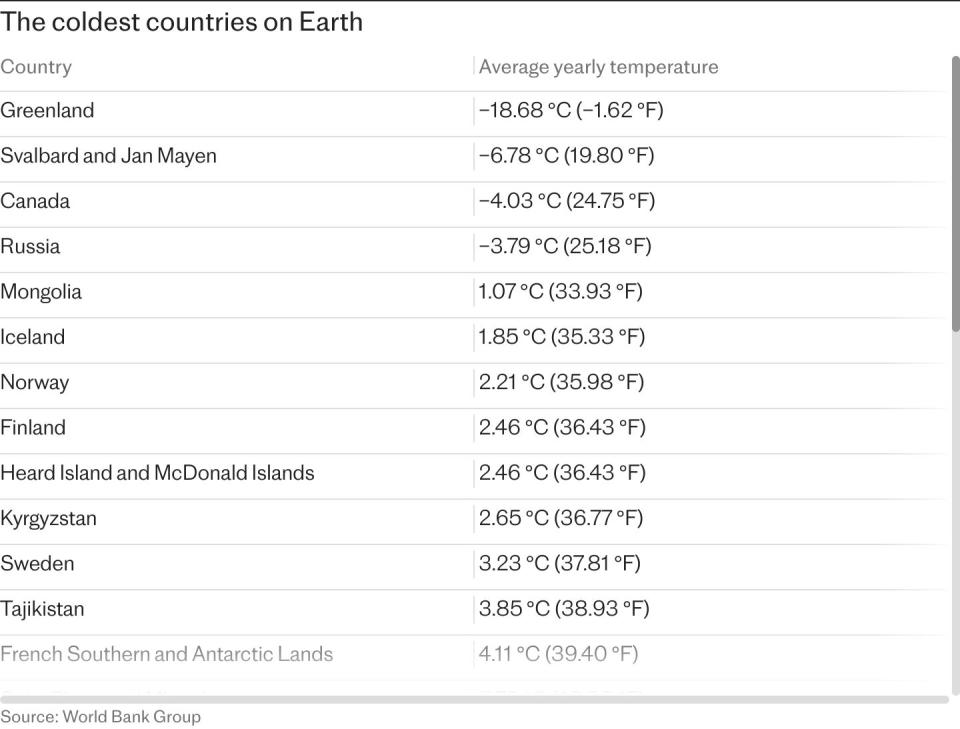
11. Poland
Get cold? Sometimes it’s absolutely Baltic. The slang expression gives a hint as to the gelid air that can settle over Poland in winter. A large country, it has an essentially continental climate – meaning long, cold winters and warm-to-hot summers with some rainfall. Where the maritime influence comes in is from the icy north.
The Baltic is not sufficiently warmed by the Gulf Stream to do much more than allow ice-free shipping; the average temperature is just 2C to 4C in winter – far colder than the Irish Sea. In recent years, the Polish “Tricity” of Gdansk, Sopot and Gdynia has gained international traction as a holiday destination, with no-frills flights from UK airports to Gdansk. The average daytime summer temperature along the Baltic Coast is 22C; the sea, though, wavers between 12C and 17C – Vaseline or neoprene might be called for.

Average national sunshine hours: 4/10
Predictability/changeability: 5/10
Average national rainfall: 10/10
Summer weather: 6/10
Winter weather: 2/10
Weather diversity: 6/10
Total: 33/60
10. Switzerland
With the highest average altitude of any major European country (tiny Andorra is a wee bit higher), Switzerland is surprisingly unextreme in its weather patterns. Landlocked, it is protected by the countries that surround it, though of course the high peaks draw in clouds and then make sure to puncture them. The Swiss lowlands suffer neither extreme temperatures nor wild weather conditions.
Even in the mountains, the sun can be hot – though night-time temperatures naturally plunge high up. Autumns can be overcast and winters sharply cold, but a whole holiday industry has been built around reliable snowfall and Switzerland’s accommodation and transport systems are geared to allowing city residents to make the most of the slopes.

Average national sunshine hours: 4/10
Predictability/changeability: 5/10
Average national rainfall: 4/10
Summer weather: 7/10
Winter weather: 7/10
Weather diversity: 7/10
Total: 34/60
9. Germany
With a temperate, rainy climate, Germany has never been a hotel-and-sun brochure destination. Baltic beaches conjure images of woollen trunks and larded swimmers the colour of belugas. The wine-growing southwest, though, often has fine summers in temperature terms (40C is not headline news in the way it is in the UK). Lavender, Mediterranean pine, almond and even lemon trees thrive here. That said, there’s always the chance of a rain shower. Winters in the east can be harsh, which has served Cold War novelists and filmmakers well but can turn a Berlin weekend break into a moody affair.

Average national sunshine hours: 4/10
Predictability/changeability: 4/10
Average national rainfall: 9/10
Summer weather: 6/10
Winter weather: 5/10
Weather diversity: 7/10
Total: 35/60
8. Croatia
The Adriatic coast basks in a fairly narrow band of the Mediterranean climate, at the same latitude as northern Italy; summer temperatures range on average from 26C to 30C in the coastal region, 22C to 26C inland and 15C to 20C in the mountain region.
Variation rather than extremes characterises the weather in the shoulder and colder seasons. The warmest - and at the same time rainiest - region is Dalmatia, which includes most of Croatia’s Adriatic islands. But when it’s 30C-plus for days on end, a shower can be welcome. Croatia also has a ski season but low altitudes make the snow unreliable.
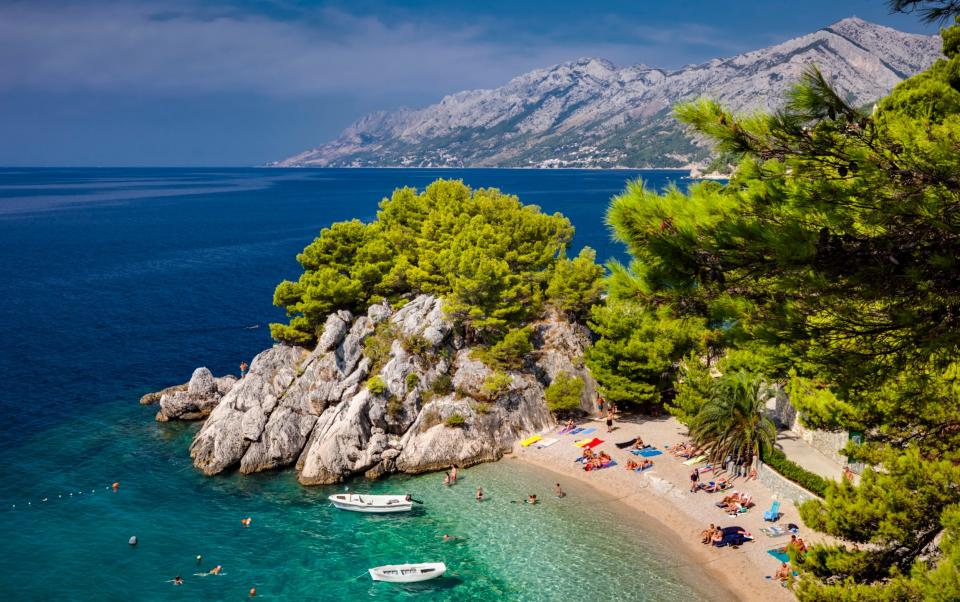
Average national sunshine hours: 6/10
Predictability/changeability: 6/10
Average national rainfall: 5/10
Summer weather: 8/10
Winter weather: 6/10
Weather diversity: 7/10
Total: 38/60
7. France
The train journey from Lille to Nice is a grand tour of weather and geography. The Pas-de-Calais and Nord areas under grey skies are far more depressing than Kent, but a few hours on the TGV and you can be speeding under a strong sun through regions where wine, lavender and the weather get along famously. France is huge, surrounded by very different seas and with many latitudes and altitudes and, consequently, it encompasses many weather systems. Meteo France divides the country into five main regions and each one has appeal for holidaymakers, with walkers loving the cool, high places, sunseekers adoring the Med, and Paris enjoying a defined, if sometimes torpid, summer season.
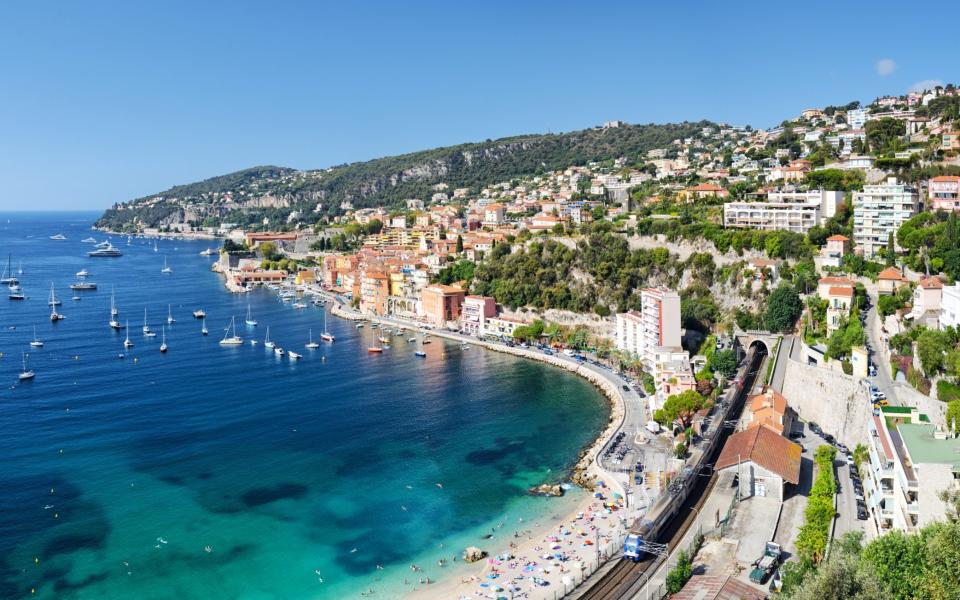
Average national sunshine hours: 6/10
Predictability/changeability: 5/10
Average national rainfall: 8/10
Summer weather: 7/10
Winter weather: 6/10
Weather diversity: 8/10
Total: 40/60
5. Portugal
Balmy, beach-oriented, wine-growing and with the right kind of wind to create ideal surfing conditions, Portugal is nigh-on a meteorological paradise. According to the Met Office, “Portugal gets more sunshine on average than California”. The caveats are the intense summer heat of the Algarve, which is the most popular region for tourists, and winter in the north. Due to the effects of the Atlantic Ocean, the area around Porto can be subject to strong winds and rainfall averaging as much as 120mm (5in) in December. That is, perhaps, why fado isn’t as upbeat as the Beach Boys.

Average national sunshine hours: 7/10
Predictability/changeability: 5/10
Average national rainfall: 8/10
Summer weather: 9/10
Winter weather: 6/10
Weather diversity: 6/10
Total: 41/50
5. Turkey
More than three times the size of the UK, Turkey has many climatic regions, ranging from the Central Anatolian steppe – where Lake Tuz dries up in the hot summer – to Mediterranean climates on the west and south coasts, to the complex microclimates of the Sea of Marmara. The Black Sea region is the coldest region in Turkey, making it a summer-only destination for most holidaymakers.
If Turkey is largely sold to Western Europeans as a mid-market beach destination, that’s partly due to the package-oriented economics of tourism as well as geopolitics; Ankara doesn’t want travellers to think about Iraq or Syria, or harsh deserts, when they’re browsing for packages. Winters in Turkey are cloudy with more rain than many parts of Europe. Cold Siberian winds can make Istanbul unpleasant.

Average national sunshine hours: 6/10
Predictability/changeability: 5/10
Average national rainfall: 10/10
Summer weather: 8/10
Winter weather: 5/10
Weather diversity: 7/10
Total: 41/50

4. Greece
Mountain chains run north-south in central Greece and the Peloponnese. Around the highest peak, Mount Olympus (9,572 feet) and along the backbone of the Pindus range, it can get very chilly. But, aside from freak winter lows, Greece is a travel-friendly country year round. Between the mild, wet winters and the hot, dry summers in the southern lowland and island regions fall lovely shoulder seasons. For the ancients, spring was when Persephone came back from the underworld, and her mother, Demeter, made the earth bloom for her return. The Mediterranean is everywhere you look in Greece, which helps moderate extremes nudged in by continental lows. Sea breezes offset the extreme highs of midsummer. Greece isn’t a huge country, but it sprawls and stretches and fragments into islands and peninsulas. Consequently, beach weather is much about compass point and wind. This land of coves, inlets and bays means you can always find shelter and a sun trap.
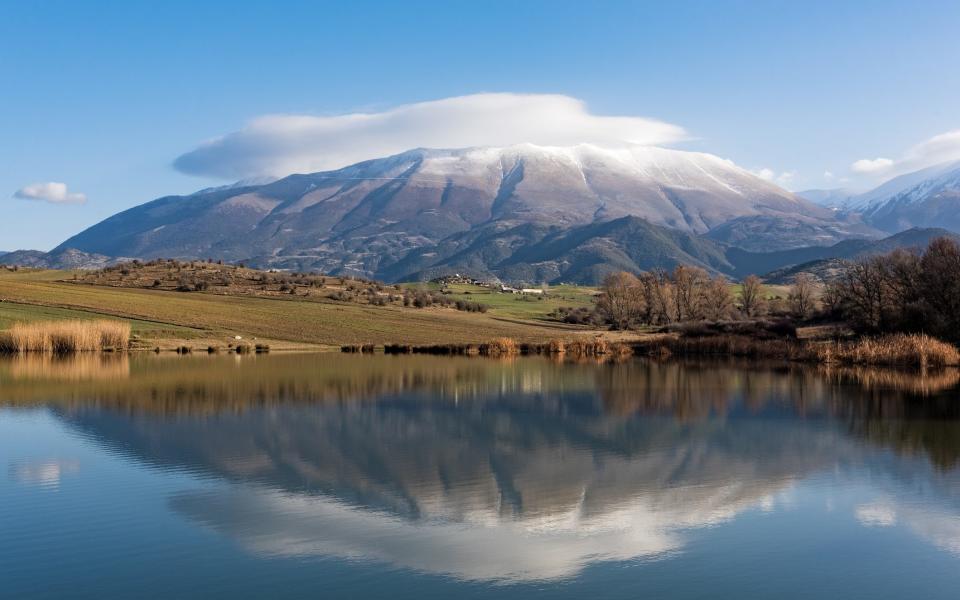
Average national sunshine hours: 7/10
Predictability/changeability: 6/10
Average national rainfall: 9/10
Summer weather: 8/10
Winter weather: 7/10
Weather diversity: 6/10
Total: 43/60
3. Italy
The long boot of Italy is a useful teaching tool for geography and meteorology students. The north is topped by mountain peaks, with reliable snows in Trentino-Alto Adige and Lombardy. Both Cortina d’Ampezzo and Turin have hosted the Winter Olympics, and in 2026 Milan and Cortina will share events. Scroll down a little and you have the sultry summers of Florence and Rome, plus thunderstorms, and cool, sometimes rainy winters.
Southern Italy and Sicily have climates moderated by the Mediterranean, but warmth can turn to steaming heat in high summer. In 2021, a temperature of 48.8C was logged in Sicily – the hottest ever recorded in Europe. Winds can add a torrid edge to the weather. Trieste’s bora - and the fast-moving, baking-hot sirocco from the south – earned their names because they come back again and again. Italy has the geography and latitudinal range to make one region or another attractive year-round. The shore is never far away and rolling hills capture breezes even in midsummer.
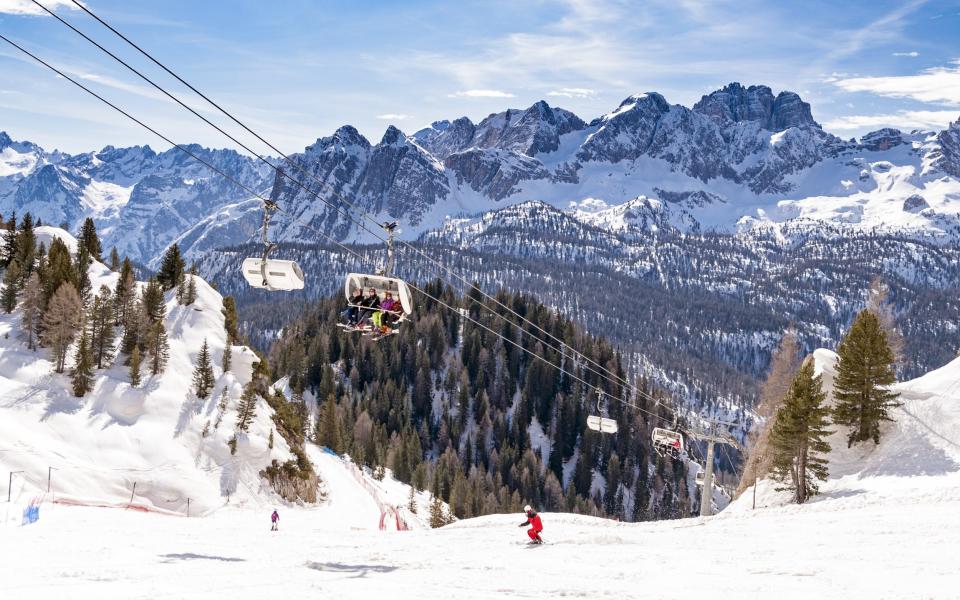
Average national sunshine hours: 6/10
Predictability/changeability: 7/10
Average national rainfall: 8/10
Summer weather: 8/10
Winter weather: 8/10
Weather diversity: 7/10
Total: 44/60
2. Cyprus
Sometimes called an “intense” Mediterranean climate, Cyprus’s weather can be more akin to that of a sub-tropical island. Nicosia routinely tops the summer rankings, and 40C is not even news. That season is long, making the shoulders short, and during what passes for winter, between December and February, the weather is usually mild and between five and six hours of sunshine can be expected.
The Troodos mountains are high but, even at 6,000 feet, the weather can be kind for much of the year. Rainfall may make winter walking a bit of a slog. More than 1.3 million Brits visit Cyprus every year. Larnaca airport is always busy with flights from northern Europe. People know what they’re getting when they holiday in Cyprus.

Average national sunshine hours: 10/10
Predictability/changeability: 7/10
Average national rainfall: 10/10
Summer weather: 8/10
Winter weather: 7/10
Weather diversity: 5/10
Total: 47/60

1. Spain
Western Europe’s second biggest country occupies its sunniest latitudes. Cooled by sea breezes and lapped by the Mediterranean, it has a topography that ensures weather diversity. One writer compared Spain to a castle, with a wall of mountains around its edges and a keep-like high plateau at its heart. The latter, which is immense, has an average elevation of 2,165 feet, making Spain the second highest major country overall in Europe (after Switzerland). The wonderful climate has made Spain a major producer of wine, citrus fruits and olive oil.
Spring and autumn in Andalusia, Extremadura and Murcia are sultry when many Europeans are in scarves and raincoats. Galicia and the north are cold, but then again, they have mountains and appeal to walkers and climbers who don’t want extreme heat during their hols. The main issue for Spain is midwinter, which turns the central plain grey and bitter. But there’s skiing at both ends of the country, and an hour or so extra on the plane and you’re in the subtropical Canaries.

Average national sunshine hours: 7/10
Predictability/changeability: 8/10
Average national rainfall: 10/10
Summer weather: 8/10
Winter weather: 7/10
Weather diversity: 9/10
Total: 49/60
The European weather forecast for summer 2024
By Rosie Mammatt
“It’s too early yet to say for certain what this year’s weather in Europe will look like. But by examining seasonal forecasts, we can get an idea about the sort of conditions we can expect. Will it be warmer and wetter than average, or cooler and drier than average? Or perhaps it will be distinctly average?
“Seasonal forecasts are currently showing signals that just about all of Europe can expect warmer than average temperatures. With record-breaking temperatures being reached during the previous two summers, the Mediterranean basin looks set to have another scorcher this year. Turkey, Italy, Greece, Cyprus and Croatia all look set to see temperatures well above the seasonal norms. The Iberian Peninsula also looks like it will live up to its well-earned reputation, with temperatures becoming increasingly hot throughout the season. The UK, Ireland and Central Europe can also expect to see high temperatures, especially in the early part of the season, with the chance of extreme temperatures decreasing as the season wears on. Scandinavia follows a similar pattern, with a warm start to the summer followed by increasingly ‘normal’ temperatures.
“Current seasonal forecasts for rain are showing a divided picture. Evidence suggests that Continental and Southern Europe will receive lower than average rainfall, whereas Scandinavia looks likely to get more rain than normal. So If you’re heading to the Med this year, you can probably be fairly confident that you’ll stay dry. If you’re staying closer to home, take a coat.”

